Promat Technical Support
Contact our technical support team with your questions on passive fire protection solutions, our products and systems or installation advice...

Hospitals are always at risk of fire due to a large number of combustible materials present in the building. Even a small fire can cause a lot of damage with potential injuries to hospital staff, patients, and visitors.
As places of healing and recovery, hospitals and their equipment are designed with safety and healthcare in mind. Unfortunately, there are also significant potential fire hazards. Medical and surgical equipment, for instance, include gas cylinders and oxygen supplies that need to be stored correctly. Electrical outlets are also sometimes at risk of being overloaded, which is one of the leading causes of fire in hospitals. Other fire risks come from hospital kitchens - a fire hazard in any building - and sources of flame that may be brought into the hospital against regulation, like cigarettes or prayer candles.
One way to protect hospitals from fires is by implementing a passive fire protection (PFP) system. A PFP system can help prevent the spread of fire, smoke and toxic gases as well as maintain the hospital’s structural integrity.
Combined with an Active Fire Protection (AFP) system - smoke detector, sprinkler or fire suppression systems, alarms, etc. - PFP can help save lives and protect the physical building structure as well. Some may think AFP is enough, but PFP is an added protection that is needed for buildings, especially hospitals.
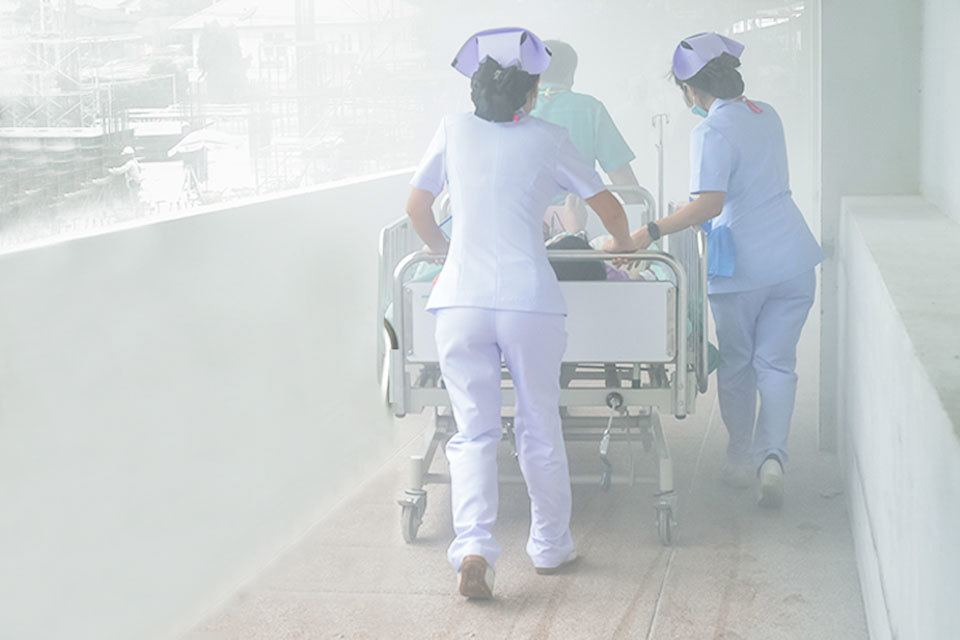
Hospitals face unique challenges when considering fire evacuation. While some patients may be able to move on their own, others require equipment and help to get them physically out of the structure.
One of the biggest challenges is the immobility of critical care patients due to physical and instability of conditions, which will make evacuation even more difficult.
Another challenge that many hospitals face, especially those in metropolitan areas, is that they are often large buildings with hundreds of rooms and corridors. The size and layouts of hospitals mean that there needs to be a clear plan of what to do and where to go in case of fire.
Since hospitals are filled with people - staff, patients, and visitors - it’s important to be able to control the flow of evacuation. The PFP system helps compartment the spread of fire and allows for more time needed for safer evacuation.
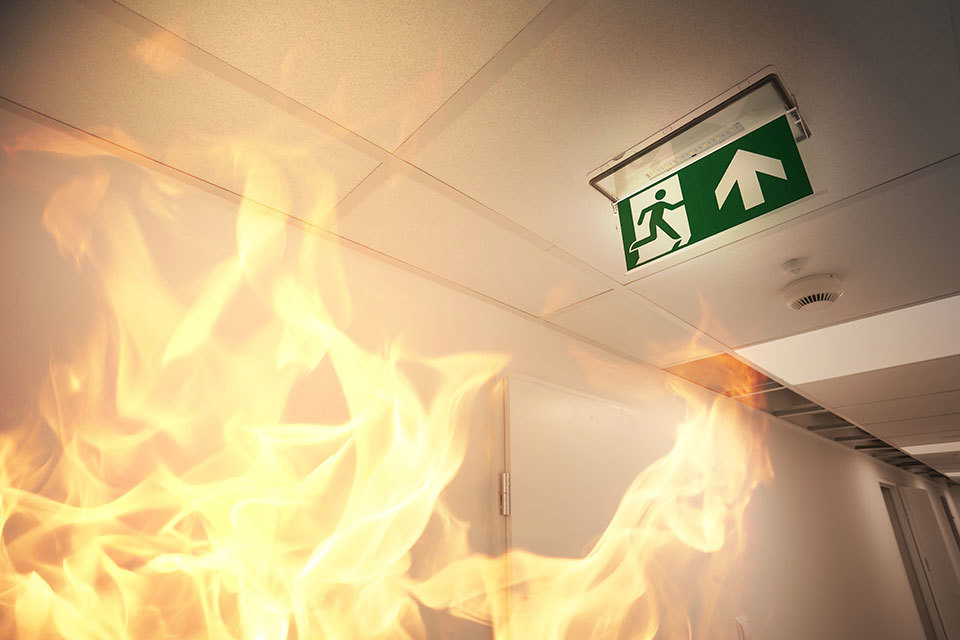
1. Fire Doors and Compartmentation
Fire doors help compartmentation which leads to focused escape routes in case of fire. They have two key functions: prevent fire spread and allow for an escape to the outside. They are specially designed to withstand the temperatures and stresses of a fire, thus enabling buildings to trap fire and delay its spread.
The general strategy for compartmentation is using fire-resistant and fire-retardant materials during construction instead of using an activated system like water sprinkler to suppress fire.
By installing fire doors and proper compartment lines during construction of the actual building, hospitals can stop a fire in its tracks - forcing it to remain in one isolated location where it can be easily brought under control and put out.
Another element of compartmentation is ensuring that fires cannot spread through air vents and ducts. This works by maintaining the functionality of the ductwork with fire-resistant enclosures on top of automated systems that will close vents and shut off specific mechanisms like fans when a fire is detected in a hospital.
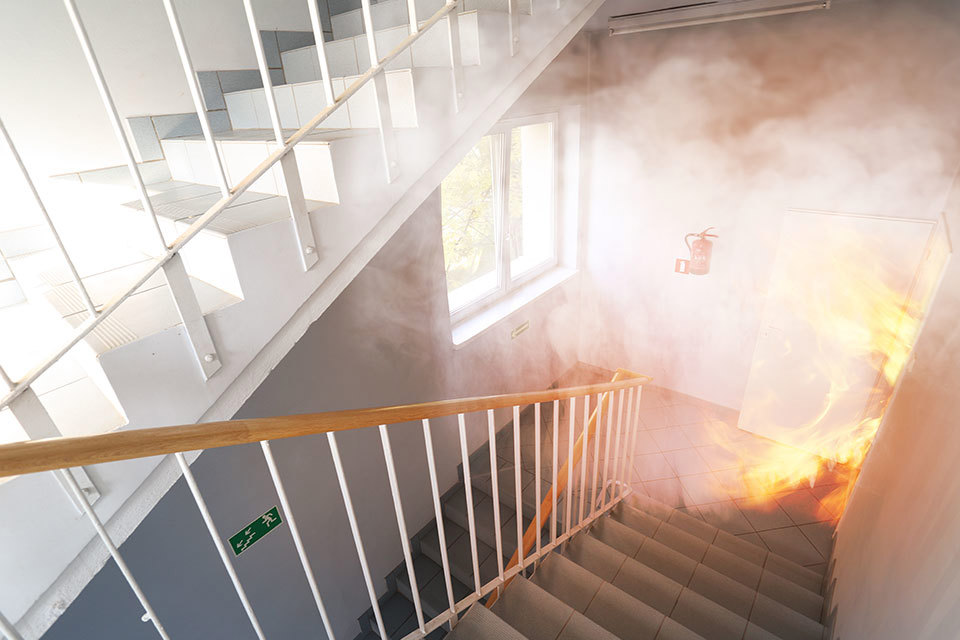
2. Ventilation and Smoke Extraction
A fire not only involves deadly flames; fire also releases smoke and other toxic gases that can be detrimental and even lethal. Many people don’t think about the danger of smoke inhalation while trying to escape a burning building. Smoke often precedes fires and rises upwards on the warming air as the fire takes hold. This means that people evacuating from the fire often inhale a lot of smoke during their escape.
Smoke inhalation can cause severe damage to the lungs and the rest of the body, which can be fatal if left untreated. In addition, if the smoke is combined with toxic gas or chemicals, that damage can be exacerbated.
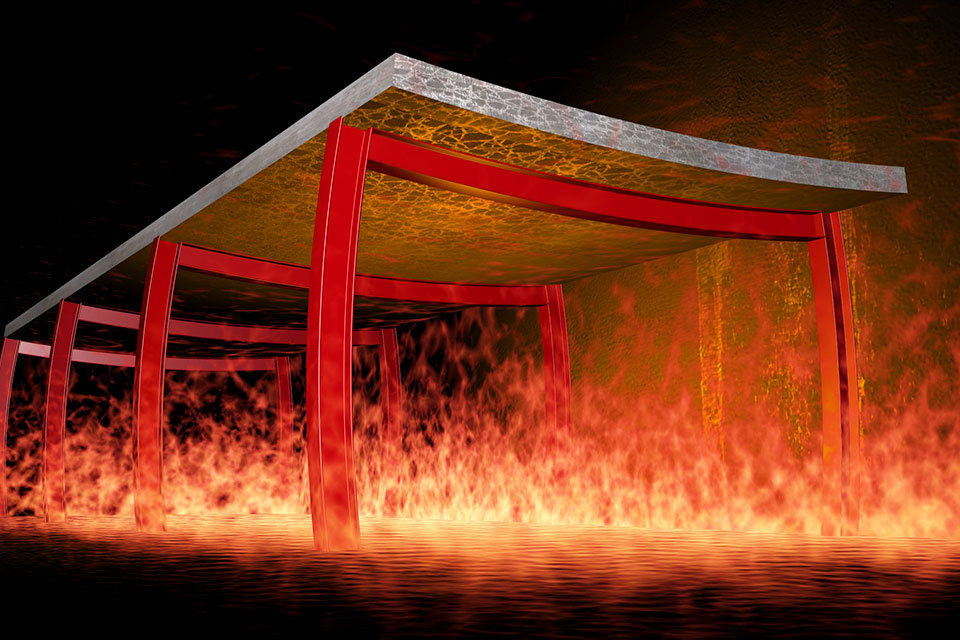
3. Load Bearing Structural Protection
Another area in which passive fire protection is important is in ensuring the structural integrity of the hospital building itself. Even if a structure’s load-bearing walls or pillars are made out of steel, concrete or a combination of both, it’s important that these materials are protected from fire and remain stable during the whole fire exposure.
Concrete heats up relatively slowly in a fire, but the most common point of failure is the steel reinforcements. In older buildings, this can become an issue and lead to structural collapse.
Additionally, where concrete is used in high-humidity environments, the concrete can deteriorate quickly forming cracks or rust. This then puts internal structure and rebar supports at greater risk of fire exposure, and might even lead to the destruction of those walls due to rapidly heated air inside the pillar or wall.
Steel is no less at risk. When heated to extreme temperatures, its strength gradually decreases. As a result, if it is exposed to high temperatures for too long, it will no longer be able to support its loads.
One of the key roles of PFP is to ensure that load-bearing walls and key structures are built and protected in such a way that they won’t buckle, crumble or collapse during even the most fierce fire. This gives people time to escape as well as provides additional barriers to slow the spread and contain the fire.
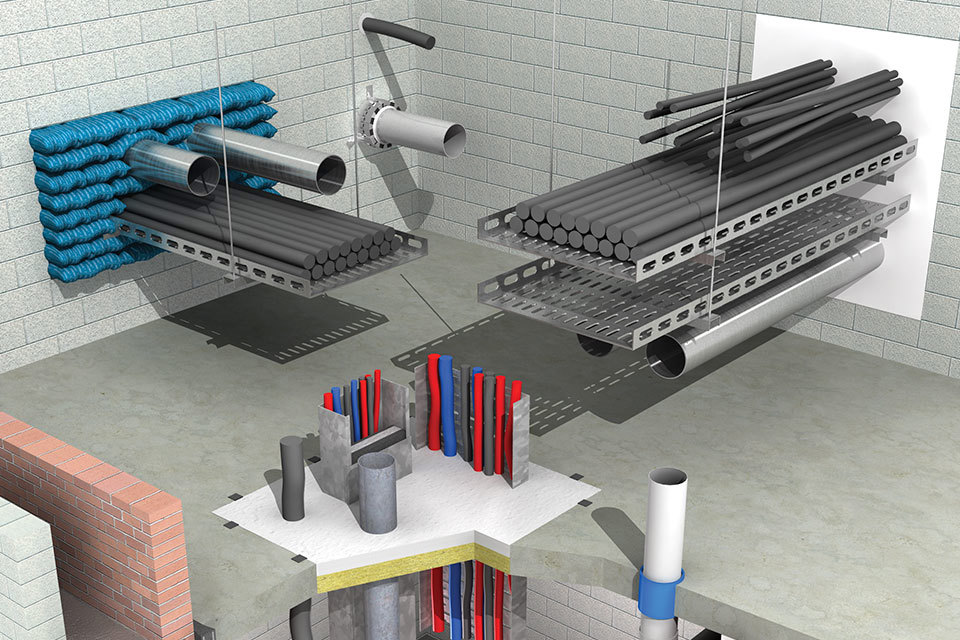
4. Fire-stopping Solutions
The installation of a firestopping system maintains the fire resistance rating of a fire separation that has openings (service penetrations, open cavities or joints). This allows fire or smoke to pass to any other part of the building without causing damage to nearby structures.
Effective firestopping systems in compartmentation elements play a critical role in containing a fire at its source. It is essential that all openings and gaps are fire-stopped to restrict lateral and vertical fire spread.
Fire-stopping solutions also protect mechanical and electrical services like cable, pipes, instrument switch box that are critical to ensure building and key equipment remains operational during and post fire incidents.
By planning a hospital’s physical structure and layout, hospitals can save lives and ensure a smoother evacuation in the case of a fire.
It’s important that all appropriate fire risks are assessed and solutions are put into place for each risk - including fire doors and compartment lines, ventilation systems, penetration openings and gaps are fire-stopped to restrict lateral and vertical smoke/fire spread in building structures.
By combining a strong passive fire protection system with an early detection and suppression system, hospitals can keep fires under control and avoid disaster.
Contact our technical support team with your questions on passive fire protection solutions, our products and systems or installation advice...
Find the product datasheets, system brochures, Declarations of Performance, installation manuals and other documents you need to get the job done.